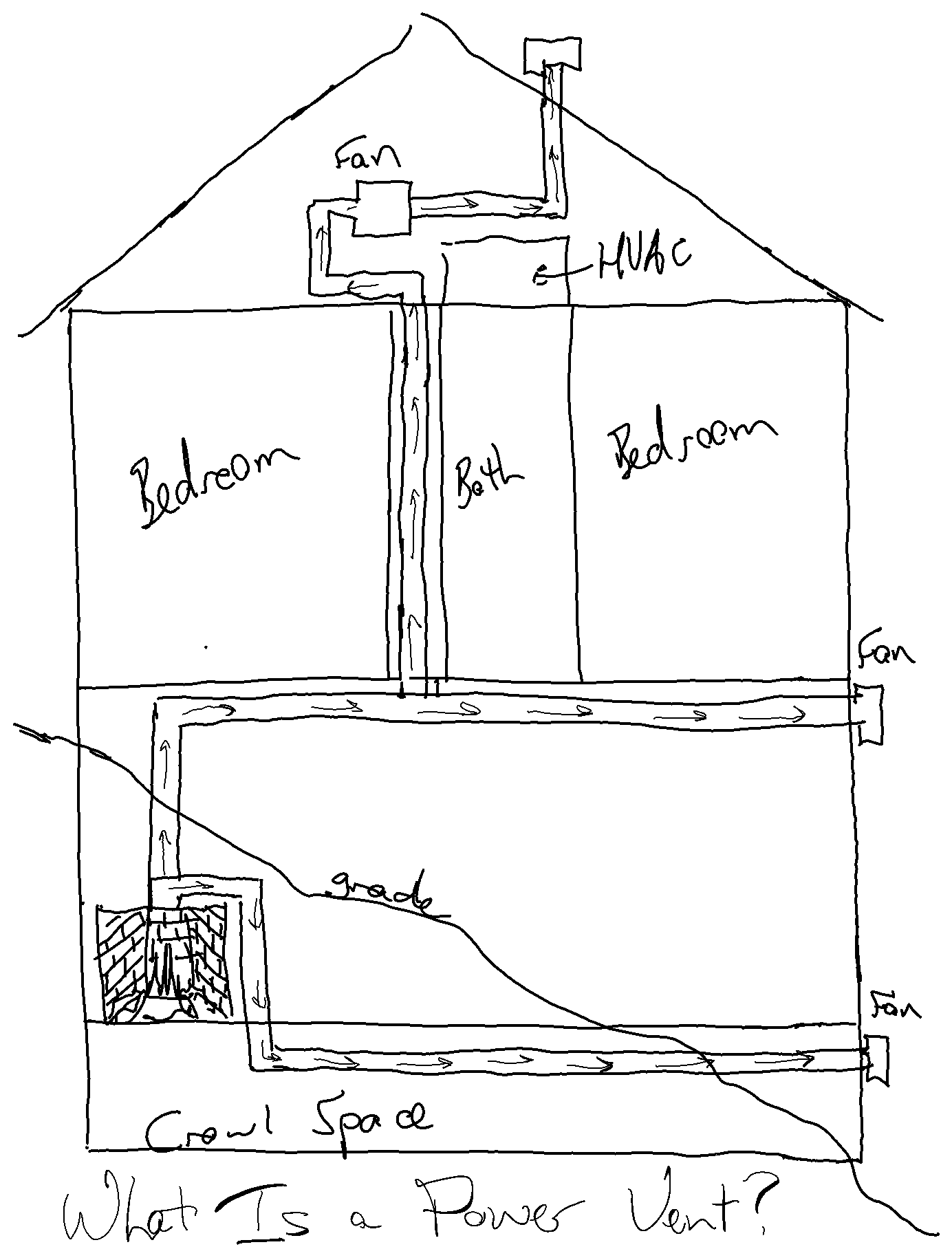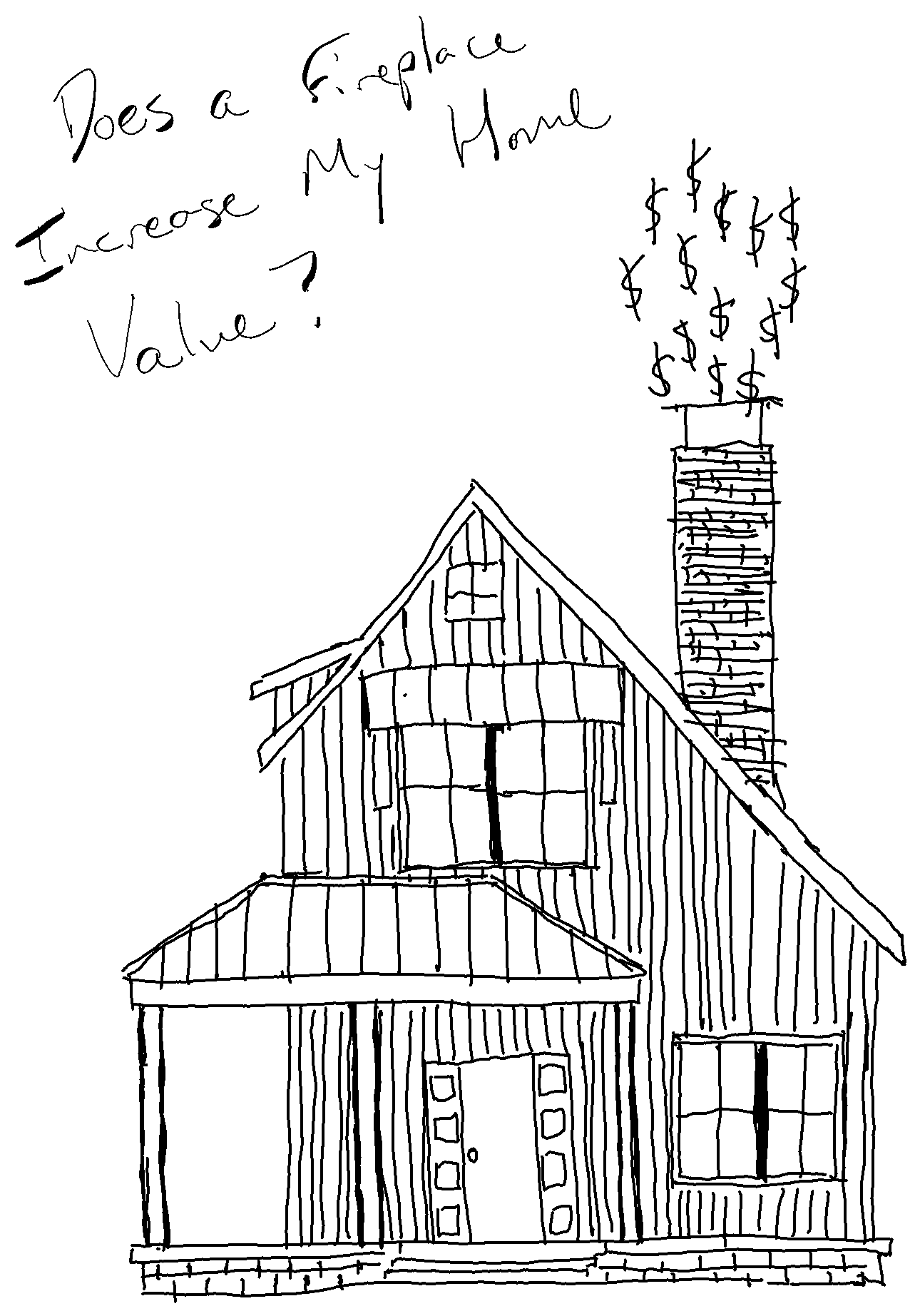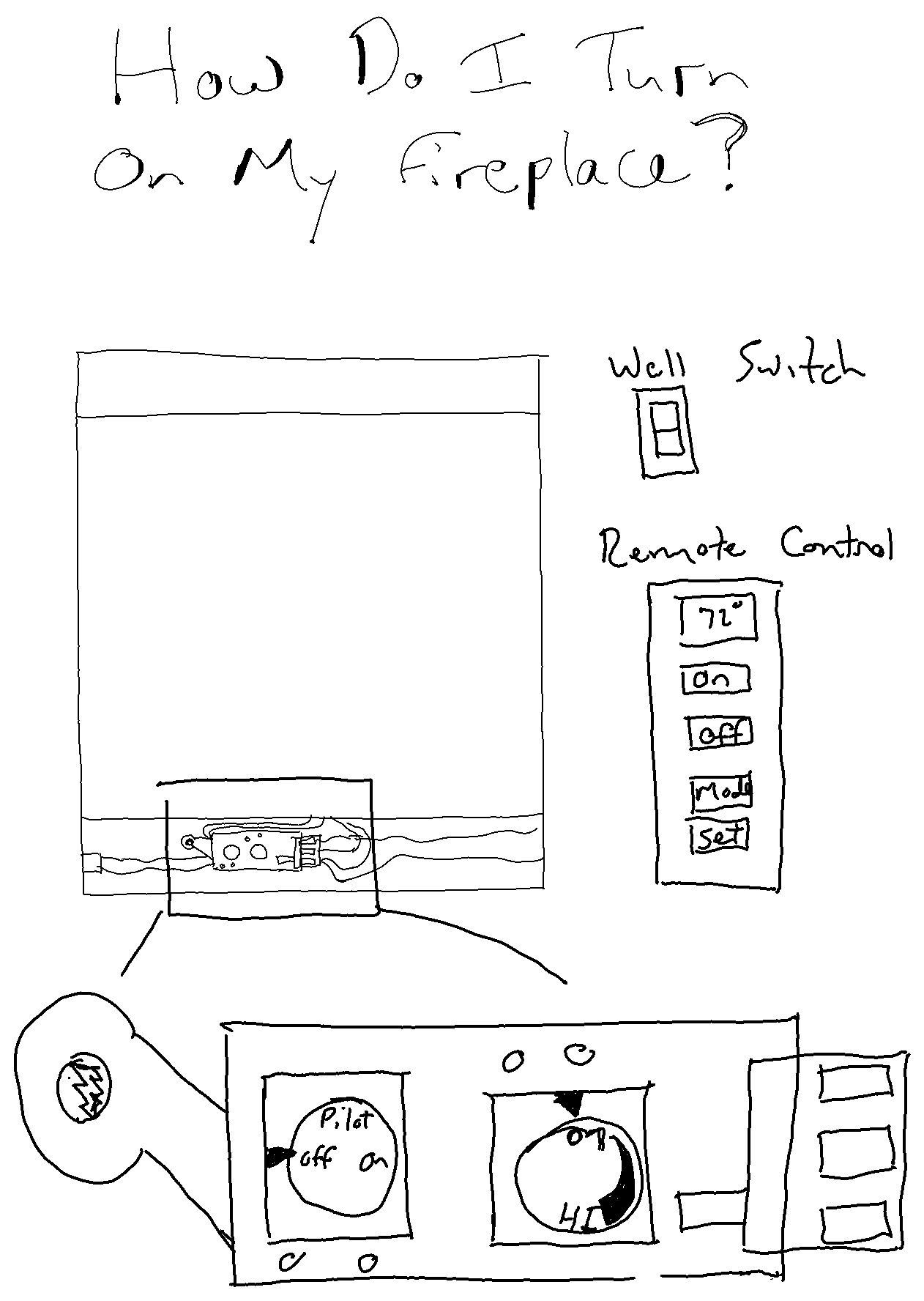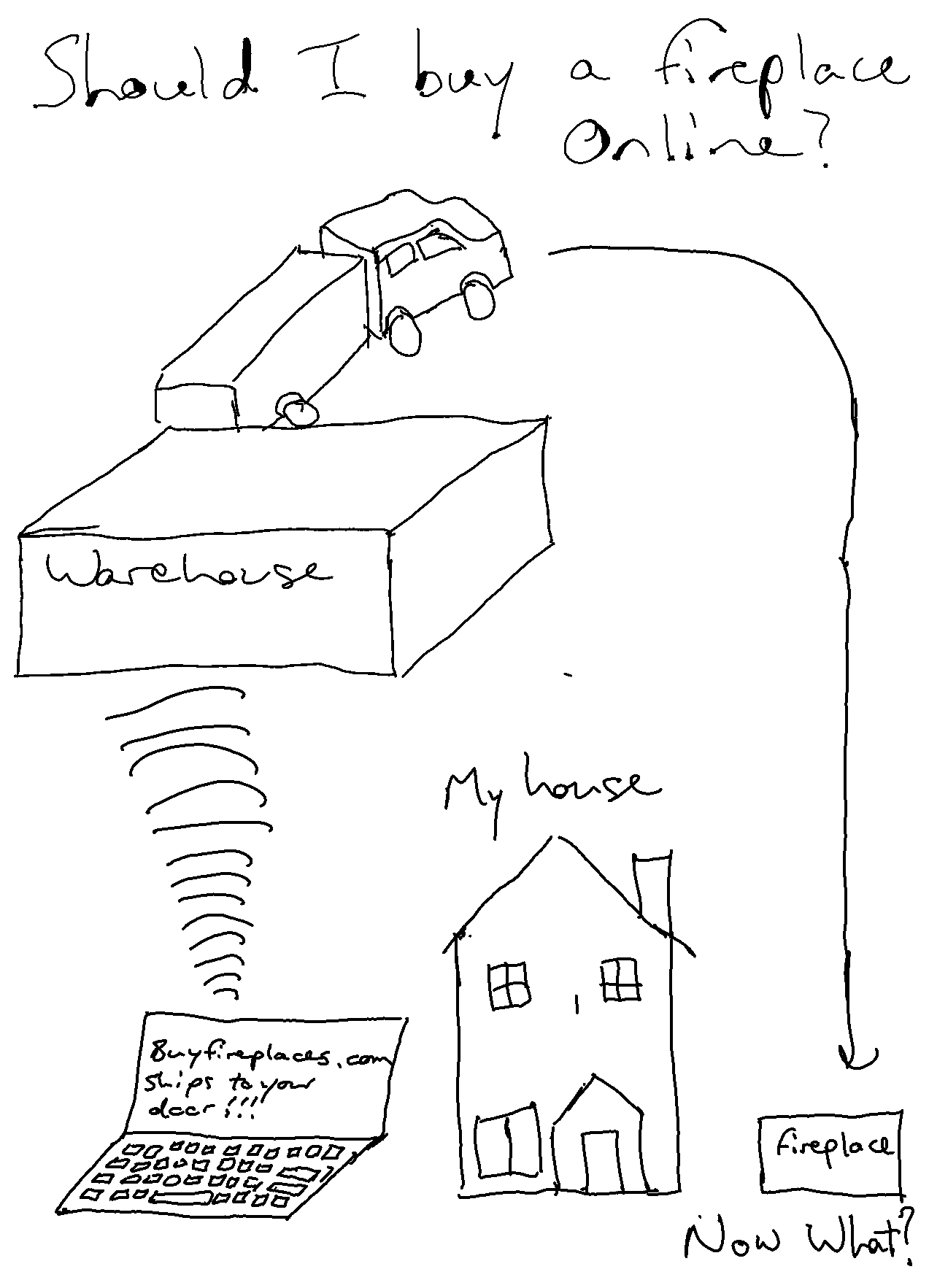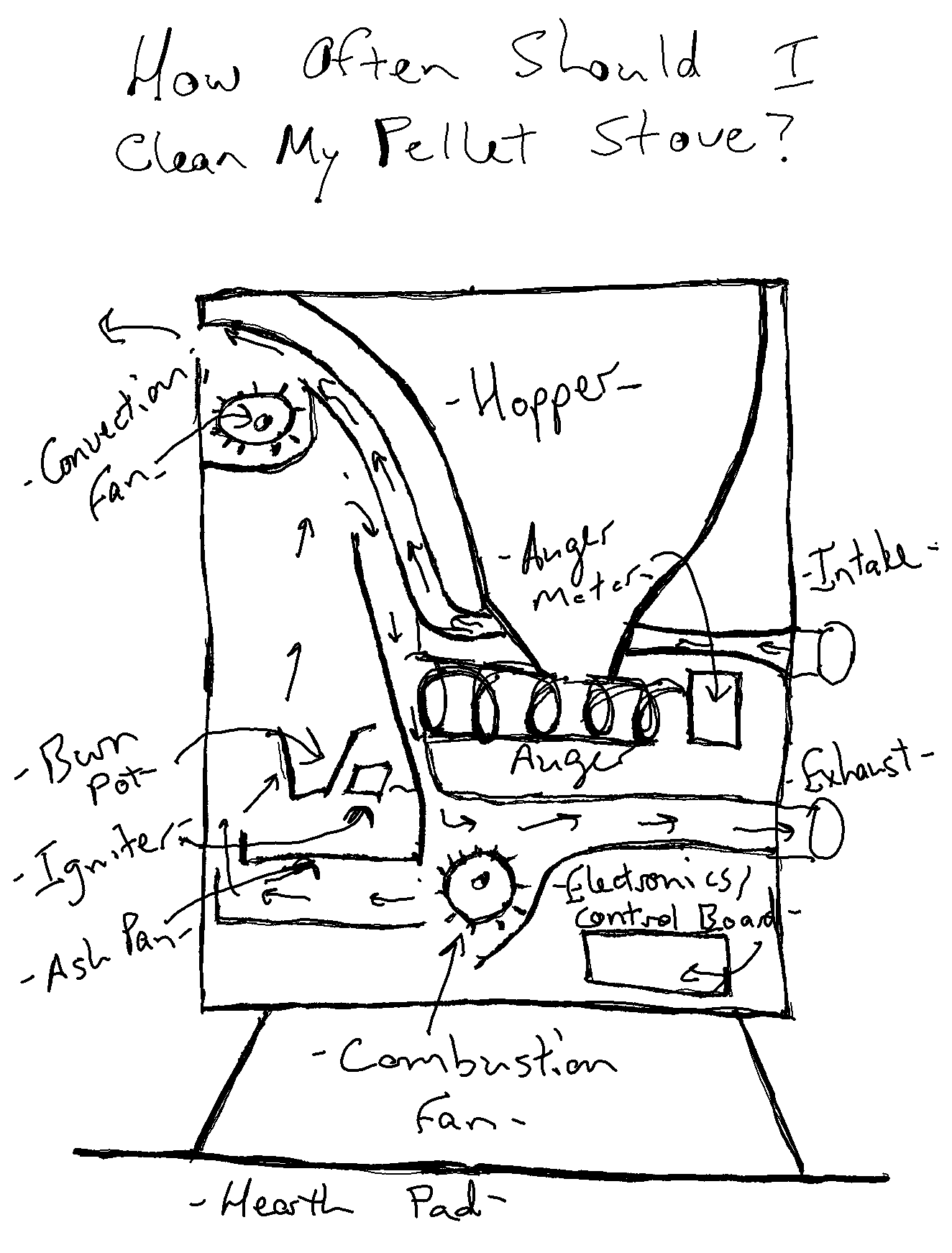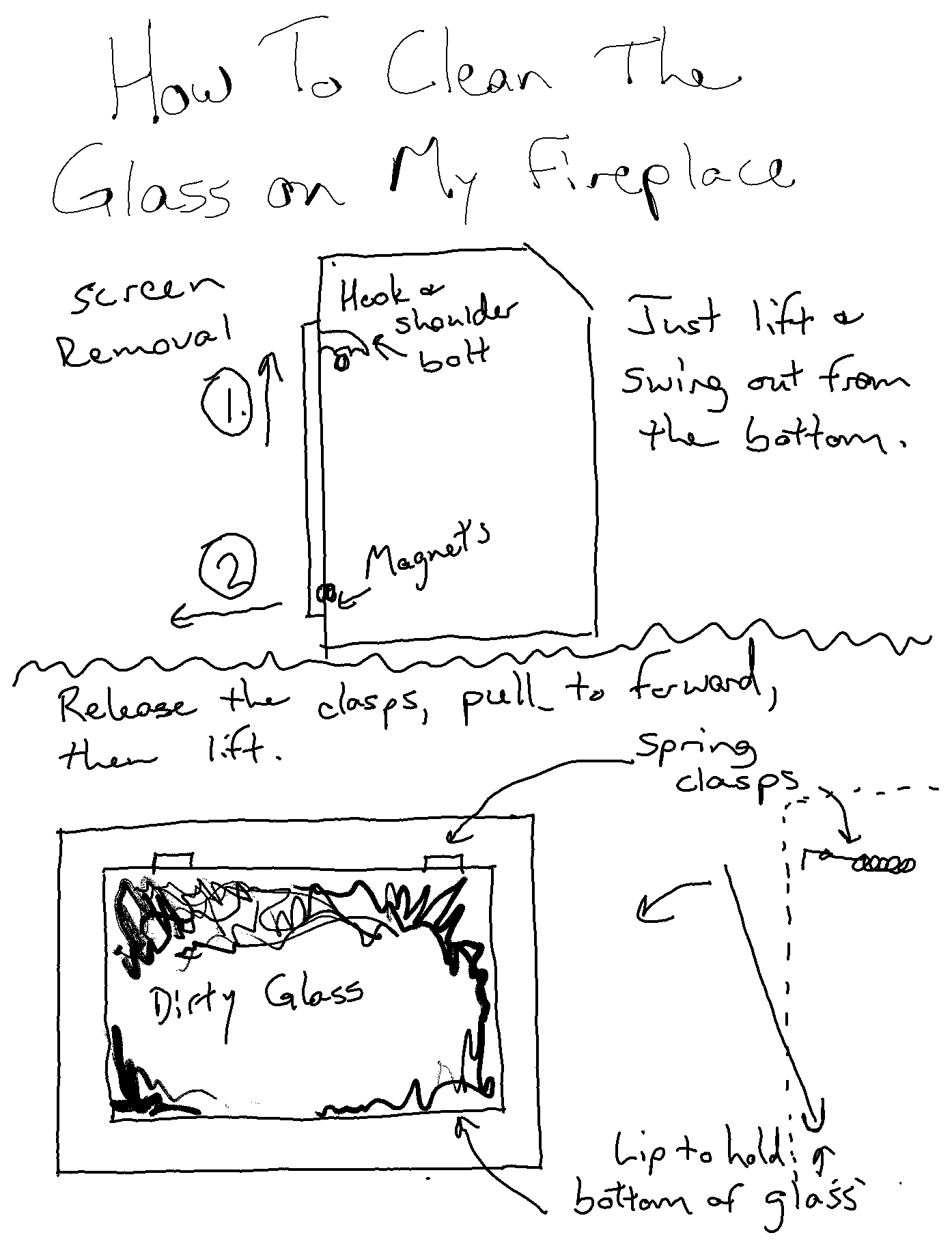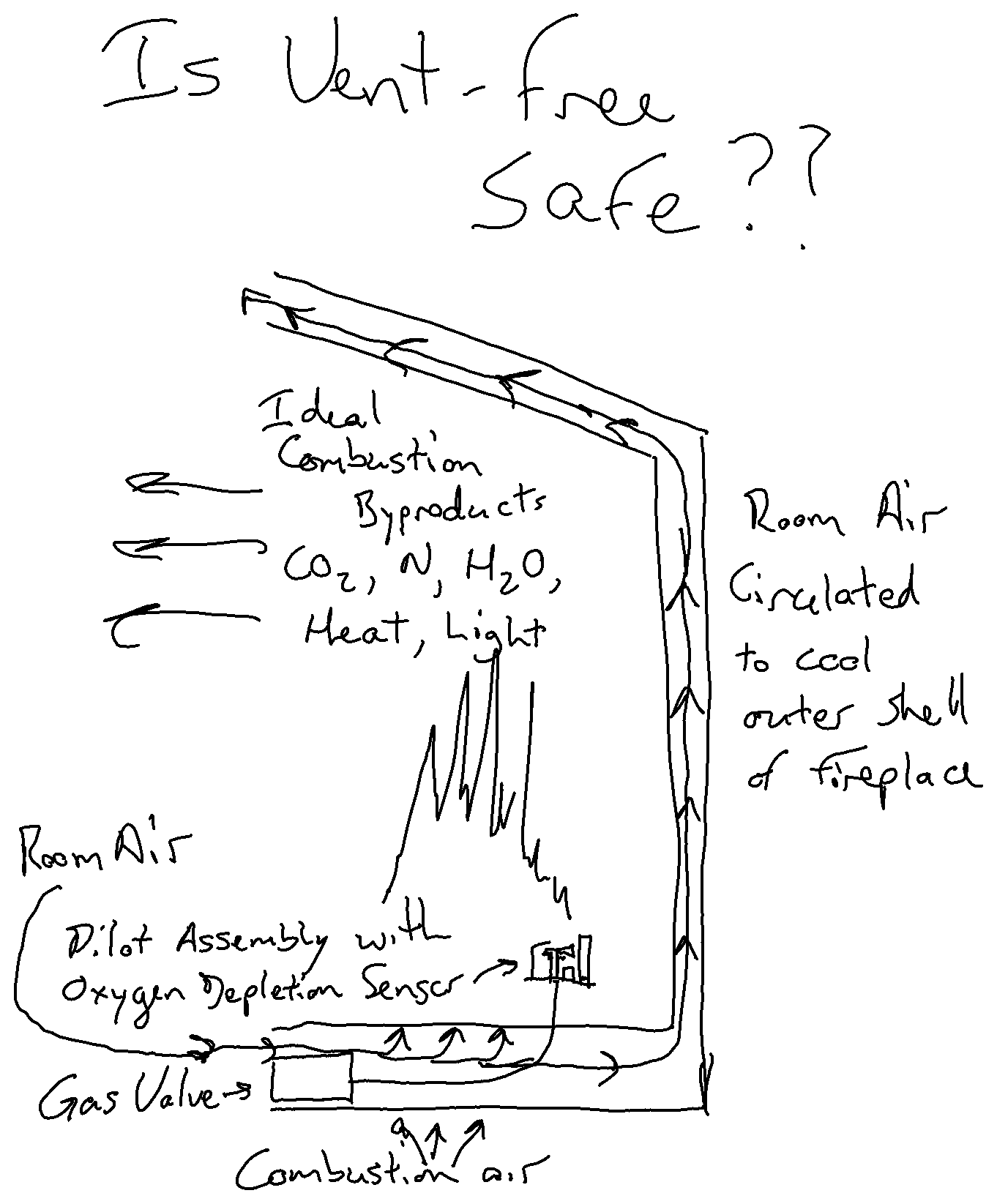
Do I need a hearth?
Can I run my wood floor right up to my fireplace?
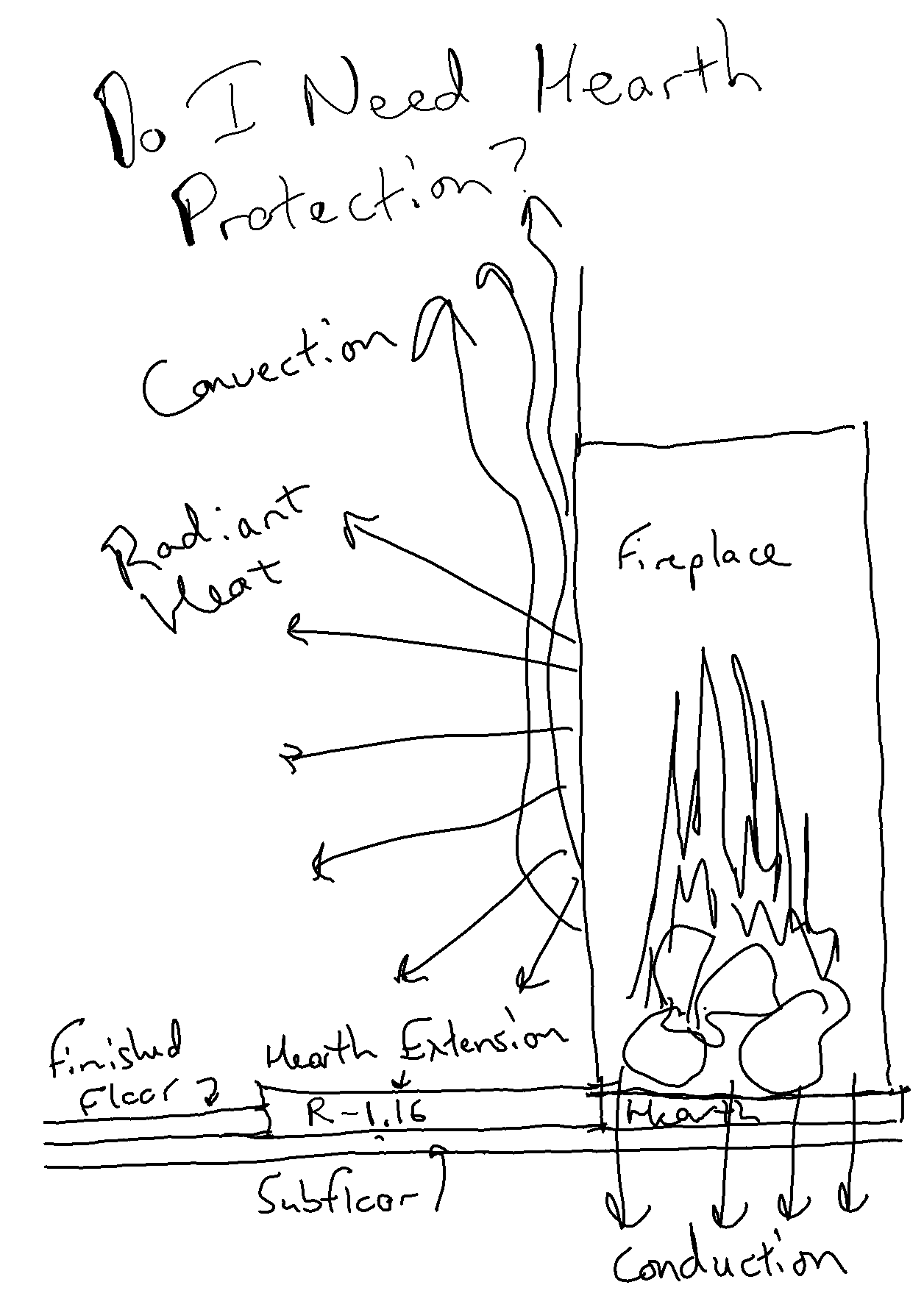
First of all, let me dispel a falsehood that most of us believe. Heat does not, in fact, rise. Hot air does indeed rise, but this is only one of the three types of heat. Hot air flow is convection. There are two other types of heat we need to be concerned about in terms of hearth protection: Conduction, heat passing from a hot object to a cooler object which touches it, and radiation, an electromagnetic wave that travels in a straight line outward from a hot object. The reason we need to be concerned about these is that they can travel in any direction they want to, including straight down into your floor.
Now that we've gotten that out of the way, we have to know if you're using a wood burning fireplace, or gas. If it's wood burning, we can look to building codes for best practices. We know that in the US, your hearth extension (technically the hearth is the floor of the fireplace, the hearth extension sits in front of it) has to be a minimum of 16" in front of the fireplace, and 8" on either side. That hearth extension has to be able to protect from the radiant heat flowing out from the fireplace, as well as conducted heat if an ember or log falls out from it. To achieve this, the material used has to have a minimum R-Value, or insulating value, of 1.16. Doesn't seem like much, but your typical slate has an r-value something like .1 per inch. So to get to 1.16 you'd need close to 12" of slate to make the grade.
Wood burning stoves still need that 16" in front, but typically only 6" on the side, and often a lower R-Value than 1.16, that just depends on the manual. General rule is that anything wood burning will need to have hearth protection, regardless of the height of the appliance off the floor.
Moving on to gas, and there are no hard and fast rules here. Codes defer here to the manual for the specific appliance you're using. There certainly are some that don't require any hearth protection. These will be low BTU burners that use tempered glass rather than ceramic. The tempered glass does not radiate heat well, and the burner is separated from the floor by usually a roughly 3" air gap. Air has a phenomenal R-Value of 3.6 per inch, so you only need about 3/8 of an inch to protect the sub-floor from any conducted heat from the burner. There are very few gas fireplaces that require non-combustible material directly under the fireplace for that reason. However if you're using a larger BTU fireplace, particularly with ceramic glass, we still have to deal with that radiant heat in front of the fireplace. Most of those will simply require a non-combustible hearth extension, so even a tile over a plywood subfloor will do. This is mostly to protect against warping or discoloration of wood, usually temperatures won't get hot enough to reach ignition. There are some though, that will require a 2" thick hearth. Most all will allow a wood floor right up to the wall if you raise the fireplace as well, typically 6-12". It all comes down to the specific appliance you're using, so make sure to read those manuals carefully.
Keep in mind that these clearances are created with life safety in mind, not the safety of your floor. Not all non-combustible materials are created equal. Some, such as luxury vinyl plank, or LVP, are extremely heat sensitive. For these you'd want a 24" deep hearth, or to raise the fireplace at least 16". Of course the better safe than sorry principal exists here, so if you're concerned about the longevity of your floor, just lay down some tile. In fact, I always think that if you're putting your fireplace near the floor, it looks a bit funny without a hearth extension, a bit incomplete. I'm sure that's because I'm a fireplace guy, and I'm just used to seeing it there. Anyway, just stay safe out there, it's even more important than staying cozy.
More from Fireplace Wizard


